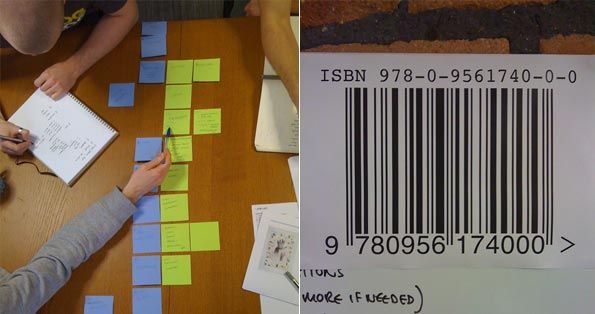Dipping a toe in the book production process
The interesting thing about trying something completely new is that you learn almost all the time. True, you make plenty of mistakes along the way. That’s how it’s been writing this book. But, it’s not just the writing you see. Book publishing involves a whole team of people, from editors and proof-readers to project managers and designers. I’m lucky that I have a semi-experienced team at Mark Boulton Design to help me get the book finished and out of the door.
Robert Mills is our Project Manager. He comes from a media research and journalism background, so is not scared of the written word. It was his job to really push the publication over the past four months or so. I asked him to pen a few words on our approach, and this is what he came up with…
Writing
A Practical Guide to Designing for the Web started out as a few blog posts. Though it has evolved significantly since then, those blog posts provided a great stepping-stone for Mark to write the book, and proved early on that people were interested in this subject and Mark’s thoughts on it.
The main thing was just to write, to get the majority of the copy down on the page. Until draft one is done there is nothing to edit, delete, proof read and add to. The key to writing is time and location, forming a timetable and isolating yourself may be useful, whatever works for you, but it takes dedication, sacrifice and many, many hours.
There were many hours spent researching and planning the book before pen could be put to paper or finger could be put to keyboard. Beyond the initial planning and discovery it was a case of writing, writing some more and then writing even more.
Design
Mark had written the chapters. Next we were to turn them from bland word documents to impressive, visually stunning pages in a design book. Nick, the designer at MBD with a fair amount of publishing experience, was tasked with typesetting the copy under Mark’s art direction. This immediately created an issue as Nick was working out of Manchester and we were working out of Cardiff. Skype proved to be an invaluable tool at this stage of the process, not only for keeping each other in the loop with the latest developments but in order to design via webcam!
Some elements of the design were agreed early on before the process had even started (it was always going to be A5 and in full colour), but naturally it was a case of putting into practice the work method we adopt with clients – iteration and refinement. Some of the pages in the final copy are original versions, some have changed dramatically throughout the design process – it has been painstakingly tough at times as a book about design clearly had to be a visual feast.
Publicity
Having an author who happens to be well known within his field, and a book that has been promised for the last two years, all helps build the publicity momentum.
We created a Flickr account. Throughout the process we uploaded sneak peeks of the various pages to give people a taster of the finished book but also to document some of the initial sketches and behind the scenes process.
A Five Simple Steps Twitter account was also set up. As I write this we have 874 followers! (Thanks to you if you are amongst that group) Again the purpose of tweeting was to publicise the book but also to connect to the potential readers. Our tweets ranged from quotes lifted straight from the pages of the book, links to the Flickr group, to more general news updates and countdowns to launch day.
Blogging was also a fundamental part of the process simply because the book idea evolved from one of Mark’s blog posts about five simple steps to better typography so we took the book right back to where it originated from and Mark has blogged about why he chose to self publish, and about the technical requirements involved in writing and distributing your own book.
Logistics
Thankfully some elements were straightforward, all the information we needed on purchasing ISBN numbers was readily available online and it was nothing more than a simple application form outlining the content and specification of the book. Having to buy them in blocks of ten also ensured we have ISBN numbers for nine future publications (if we decide the publish more that is!).

Getting to grids with the process, and our first of 10 allocated ISBN numbers together with the bar code
Although not a necessity, there is the option of submitting a copy of the book to the British Library. For printed books this is a legal requirement, whilst they agree on the policy for electronic books, they recommend depositing the book in the interim.
Many hours also went into researching print on demand offerings, Amazon fulfillment, and other printing and distribution methods. There are many options and it is a case of finding one that meets all your needs. For us it was self publishing (please see Mark’s other blog posts for more information on this).
Looking forward
At the moment we don’t know if all the hard work, blood, sweat and tears has paid off. We hope so as we are immensely proud of the book but all we can do now is sit back and wait for the feedback and reviews to roll in.
Tags that this post has been filed under.